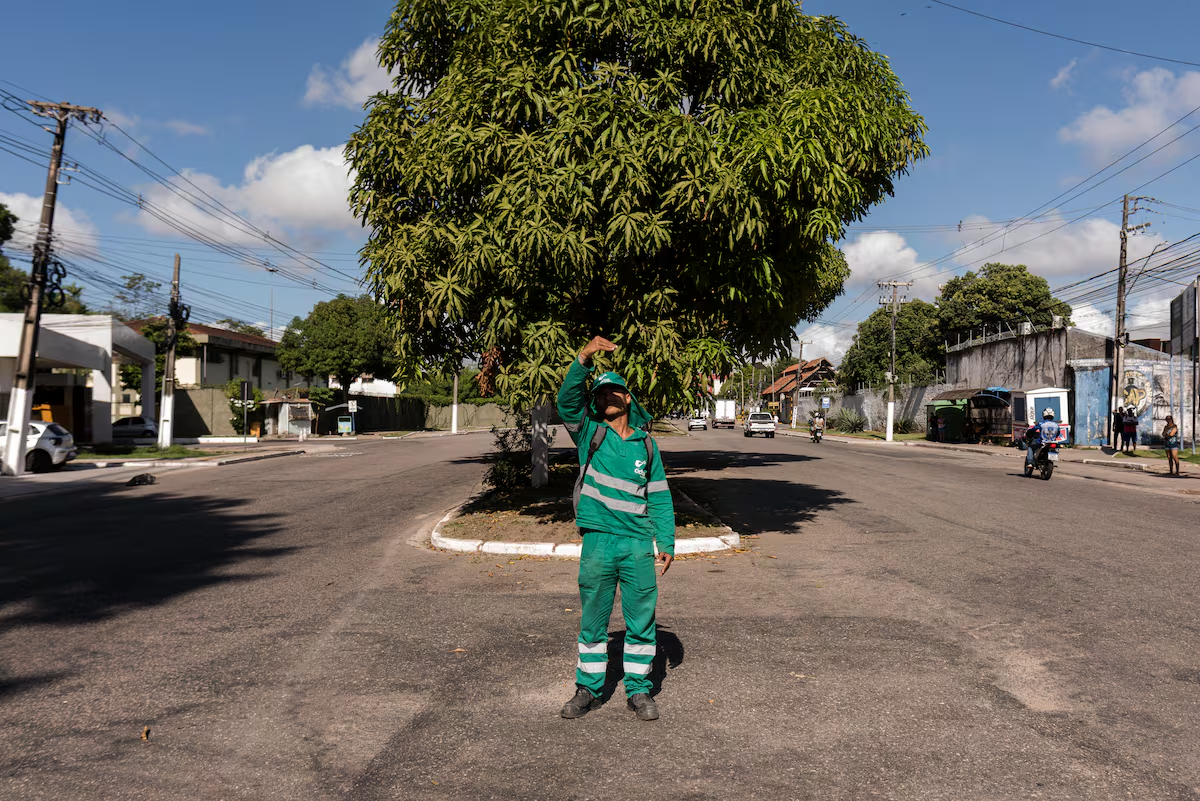
With his blend of high-handed, capricious diplomacy and climate denial, US President Donald Trump knows how to hit where it hurts. “They devastated the rainforest of Brazil to build a four-lane highway for environmentalists to travel. It became a big scandal,” he posted on Truth Social, hours before the official opening of COP30, the most important meeting of the year to shape global climate policy, which was held in Belém, Brazil. Trump, who rejected a personal invitation from Brazilian President Luiz Inácio Lula da Silva and did not even send a delegation to Belém, focused on the unfinished work of Avenida Liberdade to discredit the summit.
The highway is an old project that local authorities revived and included among new infrastructure initiatives aimed at easing traffic during the event, which attracted up to 50,000 visitors to this city at the mouth of the Amazon River. The project has been controversial because it runs through a nature reserve, involved felling trees and is not yet operational. Some residents say it wasn’t necessary, as it only leads to a high-end shopping center that already has two other access points. On a recent morning, excavators were still at work, clearing a path through the trees.
Ercila do Socorro Coelho, 59, a retired cook, is certain that if the felling of trees continues, temperatures in Belém – the capital of Pará, a state that has long been at the top of deforestation lists – will become even more unbearable. Deforestation rates in Pará, which is larger than France, have fallen dramatically thanks to political will and more resources.
Coelho doesn’t understand much of the acronym-laden jargon used by climate negotiators, but his life has been a masterclass in the devastation caused by floods and heat. “I almost no longer walk on the street. As the doctors advise me, I try to go out between 8 and 10, after which only by bus”, he explains.
She describes some daily scenes: “When it rains, the sidewalk smokes. I come home and immediately go to take a shower. You put the water on the stove and in an instant it boils. At midday the tap water is boiling hot,” she says, sheltered in the shade of a building.
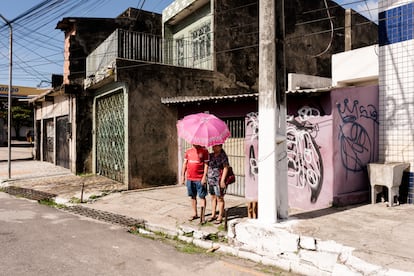
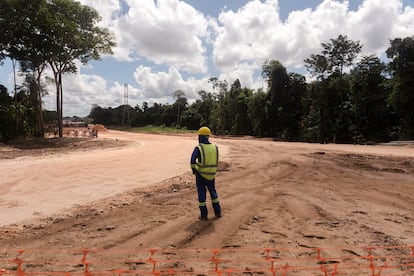
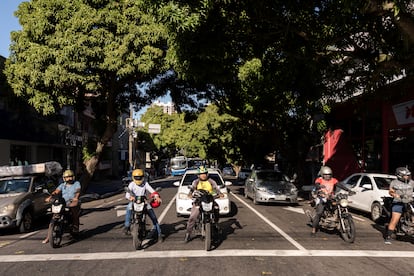
Belém is a bakery for its 1.3 million residents and visitors, despite being surrounded by water and nestled in the world’s largest tropical rainforest. Last year the city experienced 212 days of extreme heat (37.3°C, 99°F), five degrees higher than the average over the past decade, according to Mongabay, an environmental news outlet. No other Brazilian capital records so much rainfall. When torrential rains coincide with high tide, much of the city floods because it is below sea level. The Coelho neighborhood is among the most prone to flooding. The residents ironically nicknamed it Terra Firme (Solid Earth), a name that also appears on maps.
Despite the numerous projects inaugurated in view of COP30, Belém’s infrastructure remains precarious. The sanitation network is minimal, 60% of residents live in the favelas and traffic is never a big problem. To ease tension on the streets, city officials had a pass during the entire summit, which took place Nov. 10-21.
This situation makes the city hosting COP30 a symbol of the 1,000 challenges faced by many cities in the Global South, which reinforces the daily impact of problems rooted in the industrialization of the Global North, in the form of tornadoes, hurricanes or typhoons. Although extreme, the situation in Belém is quite common. According to a federal government study, approximately 35% of Brazilian cities (1,900 municipalities) are at risk of environmental disasters such as landslides, floods and torrential rains. Around 20 ministries are working together with civil society on a national plan that includes adaptation and mitigation measures.
Brazil and other developing countries are asking rich nations for money and technology to adapt to an increasingly hostile planet. “It is necessary to pay more attention, allocate more resources and have more political will to prepare vulnerable countries for the effects that are already being felt,” Maurício Lyrio, leader of Brazil’s COP30 negotiations, told the newspaper. O globe.
For Wendel Andrade, 38, a specialist in natural resource management and local development at the Talanoa Institute in Belém, adaptation should not take a backseat to mitigation and emissions reduction. Andrade denounces “the serious loss of vegetation” that the COP30 host city has suffered in recent years, as well as the authorities’ and residents’ contempt for trees.
Speaking as a researcher and resident of Belém, he says: “For many people, trees mean soil, leaves, a hiding place for criminals, a place where the homeless urinate, an obstacle to putting the car in the garage… When in reality, a tree is a natural machine essential for living well. It is a cistern that stores water, provides shade and provides thermal comfort.”
And although other Brazilians know it as the city of mango trees, for the dense tree-lined streets dotted with mangoes that cool the streets of wealthy neighborhoods, Belém has four times fewer trees per square meter than the UN recommends.
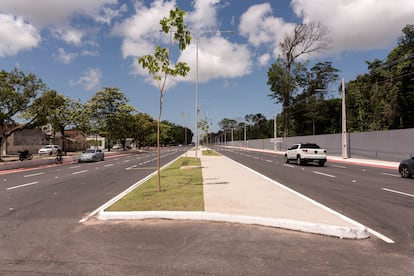
Near the works on Avenida Liberdade, another highway, the Marinha, has just been opened to traffic, which also involved the removal of a large swathe of vegetation, residents explain. Where trees once provided pleasant shade, perfect for picnics, there are now three lanes in each direction, one for parking and another for bicycles. Small trees have been planted, but it will take years for them to provide real shade. In two months, Belém’s “winter” will arrive, the season with the most rain and a slight drop in temperature. Then residents will see how the new highway holds up.
Andrade, of the Talanoa Institute, denounces that “when the world talks about nature-based solutions, Belém reproduces an obsolete model, with projects unsuitable for the environment”, such as felling trees or adding layers to the asphalt. He warns that the city “is a time bomb” because problems created by current construction projects will have to be addressed in the future.
“We need a robust reforestation plan and, above all, we must not eliminate mature trees,” says Andrade, who also highlights the need to improve management of waste clogging canals. “There’s no point in asking for money for adaptation if we keep wasting it.”
The Coalition for Disaster Resilient Infrastructure (CDRI), an alliance of governments, UN agencies, businesses and universities, estimated last year’s huge climate-related losses: storms ($173 billion), floods ($33 billion) and earthquakes ($18 billion).
In Belém, fans are a constant part of daily life. “In my house there are five of us,” explains Cintia Andrade, 33, to a sales consultant. His face lights up when he talks about the new municipal buses. They have air conditioning, a huge relief for passengers before they had to depend on the breeze coming through the windows.
In Belém they love nice, cold air conditioning, and as soon as night falls, the city comes to life. People go to the gym, they go shopping. At 11pm on Sunday, just hours before the opening of COP30, there were long queues of customers doing their weekly shopping at a centrally located 24-hour supermarket.
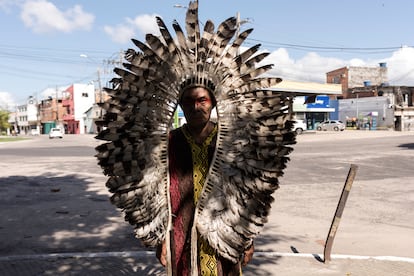
Ninahua Hunikui, an indigenous person from Acre, is having breakfast at a street stall in Belém with several relatives who have traveled with him from his village to attend COP30. They came to demand that their land be officially demarcated and therefore receive legal protection – a request he says he has already made in France and Switzerland. On her way to the public event, she wears a spectacular headdress made of harpy eagle and macaw feathers, and her face is painted with black jenipapo and red urucú dye.
He says that even in his village, which has 205 inhabitants, the impact of the climate is evident: “Our water sources are drying up due to deforestation by white people. In the 70s we traveled by boat, now we almost have to push with small canoes”, explains the leader in Portuguese.
Hunikui, who is a teacher and doctor, adds: “They are also destroying my medicines.” It refers to the plants that the rainforest has provided its people since time immemorial to cure their illnesses. He traveled to Belém in search of the protection the law can offer and with the intention of sharing, with anyone who will listen, his recipe for saving the planet.
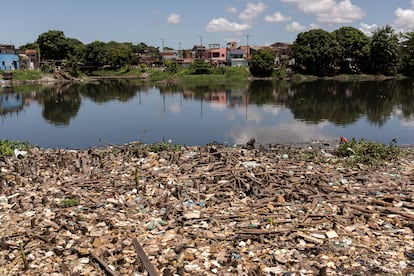
Sign up to our weekly newsletter to get more English-language news coverage from EL PAÍS USA Edition





